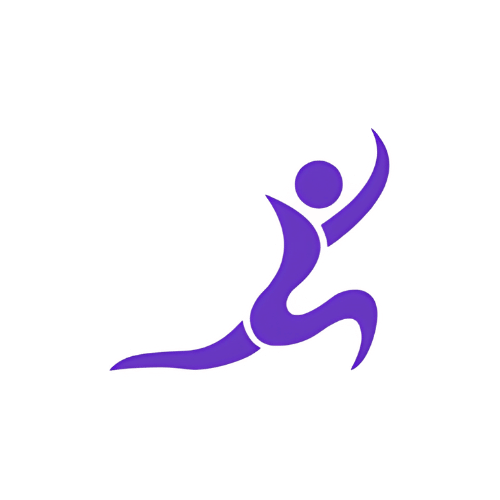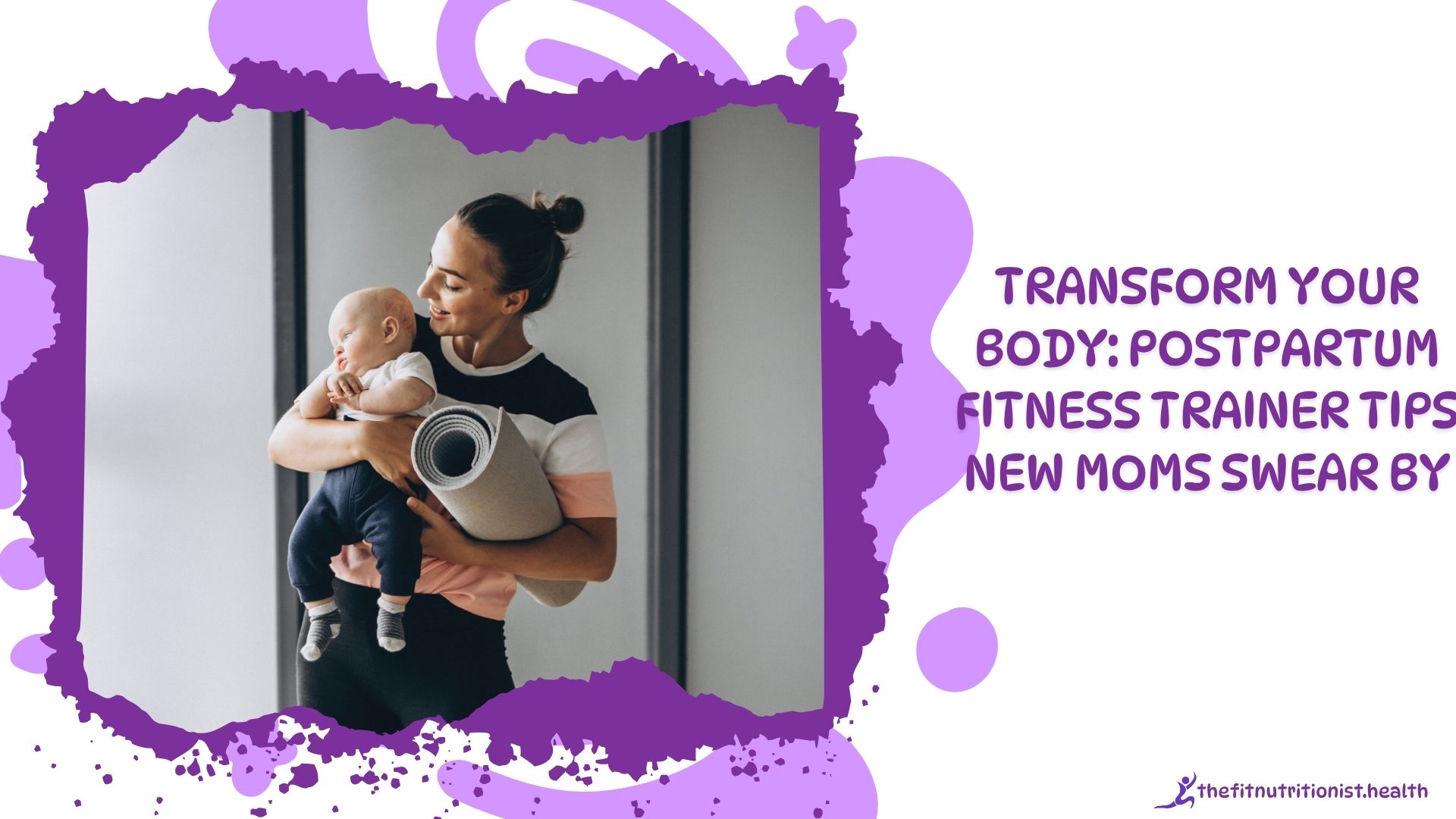Motherhood is miraculous. However, many don’t talk about the physical and emotional recovery that comes afterward. From sleepless nights to hormonal shifts, new moms are left with a post-birth body that no longer feels familiar. That’s where a postpartum fitness trainer comes in handy. These specialists don’t just help moms “bounce back.” They help them move forward stronger, more confident, and holistically healed.
Rebuilding your strength and identity after childbirth is both an art and a science. Mainstream advice often pushes vague “get back in shape” plans. However, experienced postpartum fitness trainers take a tailored, trauma-informed approach that works. They consider your diastasis recti, pelvic floor dysfunction, C-section scars, hormone fluctuations, and breastfeeding needs. The truth? There’s no one-size-fits-all solution. And that’s a good thing.
Trainers use personalized timelines, targeted breathing exercises, and nervous system resets to help moms reconnect with their bodies. They help moms break free from the pressure to return to their pre-baby weight overnight. With the right guidance, postpartum fitness is no longer about aesthetics. It’s about resilience, longevity, and self-respect.
Key Insights:
- Over 60% of postpartum women experience diastasis recti 6 weeks after delivery.
- Guided rehab reduces urinary incontinence during postpartum by targeting deep core coordination.
- 42 days postpartum is the safe window to begin guided breathing and static core rehab.
- Moms with structured recovery plans are significantly less likely to develop long-term pelvic organ prolapse.
- IRD assessment is critical to avoid complications from traditional gym workouts.
- Delayed rehab increases the likelihood of chronic back pain and compromised core stability.
Get Started
How Postpartum Fitness Trainers Customize Workouts for Moms with Diastasis Recti

Healing diastasis recti is not just about closing the gap between your abdominal muscles. It’s about rebuilding strength, regaining control, and restoring core function safely. Diastasis recti (DRA) affects over 60% of women within six weeks postpartum. For many, it doesn’t improve without targeted intervention. A postpartum fitness trainer guides recovery from the inside out. The Fit Nutritionist offers custom plans that help moms heal their core, not just flatten their abs.
Why Traditional Core Workouts Can Worsen Diastasis Recti
Trainers never start with crunches. They avoid them entirely at the beginning. Crunches, sit-ups, and Russian twists increase intra-abdominal pressure. This pressure pushes out against the linea alba, the connective tissue already stretched and weakened by pregnancy. The result? Worsened separation, abdominal doming, and risk of herniation.
Instead of these risky moves, postpartum fitness trainers begin with zero-strain breathing drills and core engagement work. They monitor for any “coning” or bulging in the abdominal wall during movement. If coning appears, they regress the exercise immediately. That’s because doming is a visual cue that the core isn’t yet integrated, and pushing harder will only delay healing. Every decision is based on what the core can do without compensation, not what looks intense on social media.
How Breathing Techniques Reduce Inter-Recti Distance
Core stability begins with your breath. One of the most effective tools postpartum trainers use is diaphragmatic breathing. Here’s how trainers implement this:
- Diaphragmatic breathing helps reactivate deep core muscles like the transverse abdominis and pelvic floor.
- Transverse breathing teaches moms to exhale while drawing the core inward without bulging.
- Pump breathing encourages synchronized contraction of the rectus abdominis and pelvic floor muscles.
Real postpartum trainers prioritize breathwork before planks or leg lifts. It’s the foundation of core control and safe strength rebuilding.
Tools Trainers Use to Measure Progress Safely
Progress in postpartum fitness is not about inches lost or sweat poured. It’s about tissue integrity, muscular coordination, and core reconnection. Trainers track inter-recti distance using hands-on assessments. Checking for finger-width gaps in the abdominal wall. They measure IRD at three points: above the umbilicus, at the belly button, and below.
They also monitor:
- Pelvic floor engagement via tactile feedback or manual internal testing
- Postural control by checking rib flare, anterior pelvic tilt, and spinal alignment
- Core symmetry during basic tasks like lifting or breathing
Some trainers even work alongside pelvic floor physical therapists who use ultrasound or EMG (electromyography) to assess internal muscle activity. These tools help ensure moms don’t move too fast and don’t reinforce poor motor patterns.
When to Introduce Dynamic Movement
Only when the core can activate without bulging do trainers introduce dynamic exercises. This progression typically begins after several weeks of static breathwork and core stability drills. The goal is to reintroduce load and motion without compromising the linea alba’s integrity.
Safe dynamic exercises include:
- Pelvic clock drills: Teaches pelvic mobility and lumbar control.
- Hundreds prep: A gentle Pilates-based activation for transverse abdominis and hip flexors.
- Supine marches and heel taps: Encourages core engagement while lifting limbs.
Trainers watch for stability under movement. If moms can maintain a flat abdomen and steady breath through these movements, they’re ready for more advanced progressions. This phase is essential for rebuilding endurance, strength, and functional capacity without reinjury.
How Customization Protects Long-Term Function
Not all DRA is the same. Some women have wider gaps. Others struggle with depth, tension, or pelvic floor dysfunction. A one-size-fits-all workout plan can do more harm than good. That’s why skilled postpartum trainers use assessments. This way, they can tailor programs around healing speed, muscle strength, delivery method, and more.
Here’s what personalization protects against:
- Pelvic organ prolapse: Straining too soon can cause the descent of pelvic structures.
- Abdominal hernias: Improper load-bearing before tissue healing increases rupture risks.
- Chronic back pain: Weak core stability alters spinal posture and increases daily strain.
Customization also addresses unique goals. Some moms want to return to running, others just want to lift their toddler pain-free. Either way, the plan matches the outcome. Thefitnutritionist offers programs that evolve with you, tracking your milestones and adjusting for your needs. So recovery lasts not just for a few weeks, but for life.
Nutrition Habits Postpartum Fitness Trainers Encourage

Postpartum nutrition isn’t just about cutting calories or eating more greens. It’s about eating smarter to repair tissue, support lactation, and rebuild a stronger, leaner body from the inside out. Trusted postpartum fitness trainers take a performance-based approach. They target metabolism-boosting strategies tailored for breastfeeding moms. Ensuring food supports fat loss and recovery without draining energy or milk supply.
Eat Strategically
Postpartum fitness trainers never start moms on restrictive plans. That’s because calorie deprivation can compromise breast milk quality, increase fatigue, and stall hormonal repair. Breastfeeding alone can burn 300 to 500 calories daily, without factoring in workouts or daily movement.
Instead of restricting, postpartum fitness trainers focus on nutrient timing and protein prioritization. They encourage balanced meals that combine macronutrients to keep moms full and fueled. A typical recovery snack might include:
- Hard-boiled eggs with whole-grain toast
- Greek yogurt with berries and chia
- A chickpea salad with olive oil and greens
Train the Metabolism with Consistent Fueling
Skipping meals is a metabolic mistake. Trainers emphasize that consistent energy intake prevents blood sugar crashes, cortisol spikes, and muscle breakdown. All of which can slow down fat loss and impair milk production. Fatigue and energy dysregulation are common when moms lack a structured plan. That’s why postpartum fitness experts recommend eating every 3 to 4 hours. Each meal should include:
- A quality protein (chicken, tofu, beans)
- A complex carb (sweet potatoes, brown rice, oats)
- A healthy fat (avocado, seeds, nut butter)
This combo stabilizes glucose, supports mood, and boosts muscle recovery. New moms often feel better, move better, and train harder simply by fueling consistently.
Hydration Is a Fat-Burner
Hydration is the most underrated metabolism booster. Postpartum fitness trainers stress that postpartum dehydration slows every system: digestion, circulation, recovery, and milk flow. And it’s not just about drinking water. The body needs electrolytes to retain and use that fluid efficiently.
Supplements and Cautions
Supplements can fill gaps, but only with caution. Postpartum trainers never prescribe a pill-first approach. Instead, they assess symptoms, dietary intake, and doctor feedback before recommending anything external. A trusted plan includes food first, labs second, and supplements third. Always under medical supervision.
Pro Tips from Postpartum Fitness Trainers
- Early Breathing Work Reduces DRA Risk: Research shows that integrating transverse abdominal breathing and diaphragmatic work reduces inter-recti distance dramatically.
- Avoiding Crunches Early Postpartum: Even well-meaning moms can worsen their abdominal separation with crunches. Trainers wait for full core re-engagement before recommending ab exercises.
- Resistance Band Breath Training is a Game-Changer: It’s low impact, core-stabilizing, and easily scalable. Plus, it empowers moms to feel strong before stepping into traditional lifting.
- Track IRD Weekly for Core Rehab Motivation: Seeing IRD shrink from 4 cm to 2 cm can be more motivating than weight loss. Trainers know it. They use it.
New to fitness? Start strong with our easy-to-follow 7-step gym exercise schedule for gym beginners.
Pop Quiz
Between the diaper blowouts and midnight feedings, it’s hard to know if your workouts are helping or stressing you out. That’s why we made this fun little sanity-saving resource just for you. This Health Quiz is your no-pressure, judgment-free reality check for figuring out where you stand on the road to recovery.
FAQs New Moms Ask Their Postpartum Fitness Trainers
When should I start training postpartum? Most women can begin gentle movement. This includes breathing and walking within a few days of vaginal birth, or a few weeks after a C-section. Functional exercise typically starts around the 6-week mark after clearance from your provider. Early starts focus on breathwork, pelvic floor engagement, and core connection, not intensity. Always follow a personalized plan based on how you feel and what your doctor advises.
Can I do squats 3 weeks postpartum? Bodyweight squats may be safe if you’ve stopped bleeding, have no pelvic pain, and feel stable. Keep the movement shallow, slow, and supported. If you’re unsure, a postpartum fitness trainer can assess your form and pelvic floor readiness. Stop immediately if you feel heaviness or strain.
Can I do crunches 3 weeks postpartum? No. Crunches at this stage can worsen diastasis recti and delay healing. Focus instead on diaphragmatic breathing, pelvic tilts, and transverse abdominis activation. Reintroduce traditional ab exercises only when cleared and assessed by a specialist trainer or PT.
How long does it take to lose weight postpartum? It varies widely; some moms lose weight quickly, others gradually over 6–12 months or longer. Fat loss depends on sleep, stress, breastfeeding, genetics, and exercise. A postpartum fitness trainer tailors your plan to match your timeline and goals.
Can I swim 4 weeks postpartum? Only if your postnatal bleeding (lochia) has stopped for at least 7 days and you have no signs of infection. Always get clearance from your doctor first. Swimming can be a fantastic, low-impact way to ease back into fitness if your body is ready.
Get the Recovery You Deserve with a Plan Built Just for You
There’s no shortcut to healing after childbirth, but there is a smarter, more supportive way forward. With the guidance of a postpartum fitness trainer, you can move beyond fear and guilt. Whether you’re dealing with abdominal separation, pelvic pain, or just feeling lost in your own body, you are not alone. Thefitnutritionist delivers a custom strategy rooted in science, compassion, and clinical expertise. Get a custom health plan built by professionals who understand what real recovery takes.

